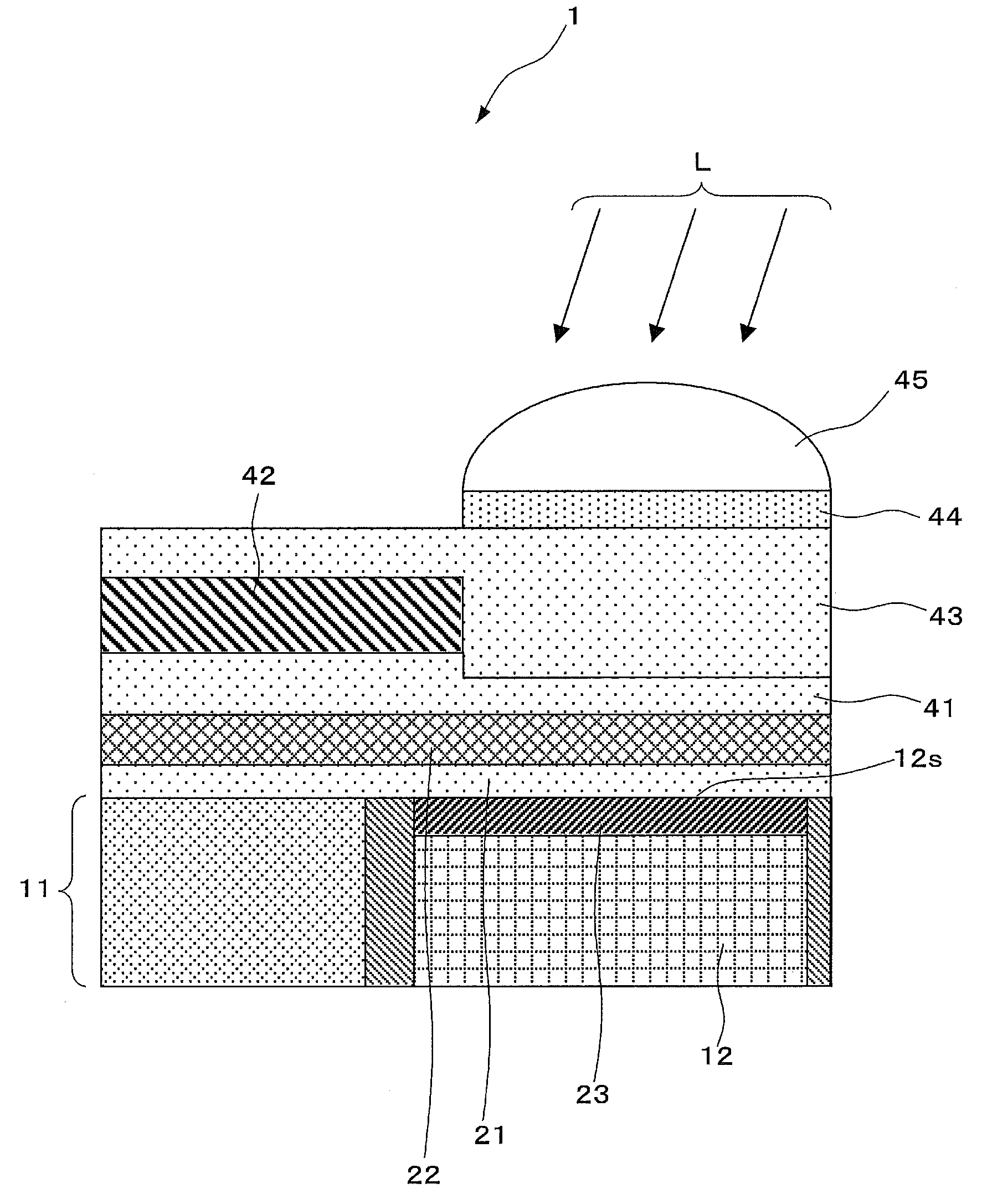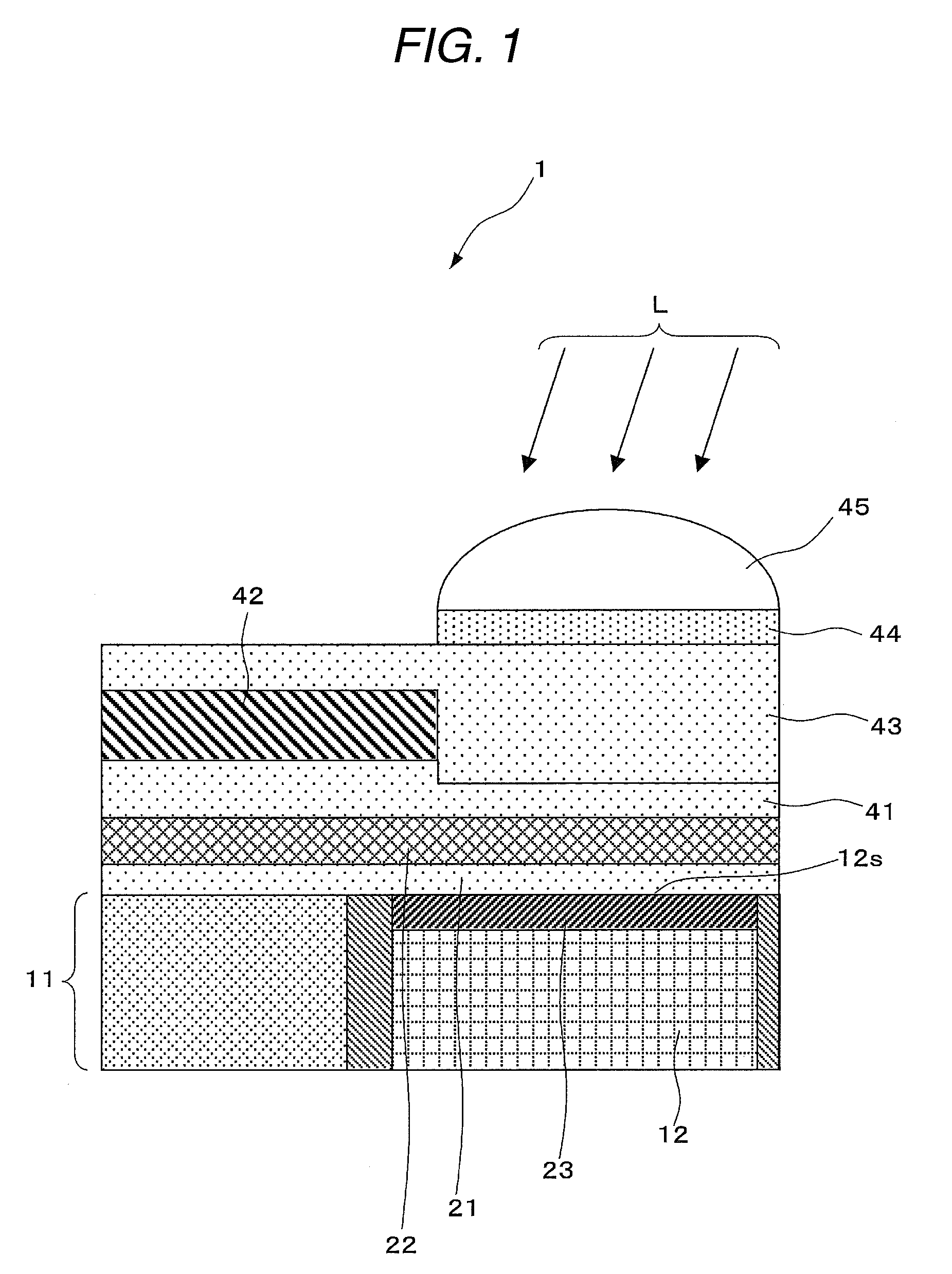Solid-state imaging device, manufacturing method for the same, and imaging apparatus
a solid-state imaging and manufacturing method technology, applied in the direction of color television, television systems, radio control devices, etc., can solve the problems of deterioration of photoelectric conversion characteristics, difficulty in achieving both the realization of a sufficient hole accumulation layer and a reduction of dark current, etc., to reduce the generation of white dots, reduce the generation of noise in picked-up images, and improve the effect of image quality
- Summary
- Abstract
- Description
- Claims
- Application Information
AI Technical Summary
Benefits of technology
Problems solved by technology
Method used
Image
Examples
first embodiment
[0096]A solid-state imaging device (a first solid-state imaging device) according to the present invention is explained below with reference to a sectional view of a main part configuration in FIG. 1.
[0097]As shown in FIG. 1, the solid-state imaging device 1 has, in a semiconductor substrate (or a semiconductor layer) 11, a light-emitting section 12 that photoelectrically converts incident light L. The solid-state imaging device 1 has, on a side of the light-receiving section 12, a peripheral circuit section 14 in which peripheral circuits (not specifically shown) are formed via a pixel separation area 13.
[0098]In the following explanation, the solid-state imaging device 1 has the light-receiving section 12 in the semiconductor substrate 11.
[0099]A film 21 for reducing interface state density is formed on a light-receiving surface 12s of the light-receiving section (including a hole accumulation layer 23 described later) 12. The film 21 for reducing interface state density is formed...
second embodiment
[0135]A solid-state imaging device (a first solid-state imaging device) according to the present invention is explained with reference to a sectional view of a main part configuration in FIG. 6.
[0136]In FIG. 6, a light shielding film that shields a part of a light-receiving section and a peripheral circuit section, a color filter layer that splits light made incident on the light-receiving section, a condensing lens that condenses the incident light on the light-receiving section, and the like are not shown.
[0137]As shown in FIG. 6, in a solid-state imaging device 4, an insulating film 24 is formed between the surface of the peripheral circuit section 14 and the film 22 having negative fixed charges such that a distance from the surface of the peripheral circuit section 14 to the film 22 is larger than a distance from the surfaces of the light-receiving sections 12 to the film 22 in the solid-state imaging device 1. When the film for reducing interface state density is formed by a s...
third embodiment
[0140]A solid-state imaging device (a first solid-state imaging device) according to the present invention is explained with reference to a sectional view of a main part configuration in FIG. 7.
[0141]In FIG. 7, a light shielding film that shields a part of a light-receiving section and a peripheral circuit section, a color filter layer that splits light made incident on the light-receiving section, a condensing lens that condenses the incident light on the light-receiving section, and the like are not shown.
[0142]As shown in FIG. 7, in a solid-state imaging device 5, a film 25 for separating a film having negative fixed charges and a light-receiving surface is formed between the peripheral circuit section 14 and the film 22 having negative fixed charges in the solid-state imaging device 1. The film 25 desirably has positive fixed charges to cancel the influence of the negative fixed charges. For example, silicon nitride is preferably used for the film 25.
[0143]In this way, the film ...
PUM
 Login to View More
Login to View More Abstract
Description
Claims
Application Information
 Login to View More
Login to View More - R&D
- Intellectual Property
- Life Sciences
- Materials
- Tech Scout
- Unparalleled Data Quality
- Higher Quality Content
- 60% Fewer Hallucinations
Browse by: Latest US Patents, China's latest patents, Technical Efficacy Thesaurus, Application Domain, Technology Topic, Popular Technical Reports.
© 2025 PatSnap. All rights reserved.Legal|Privacy policy|Modern Slavery Act Transparency Statement|Sitemap|About US| Contact US: help@patsnap.com



